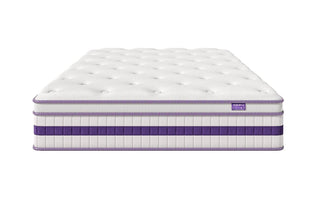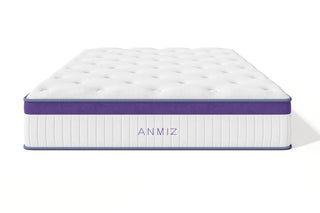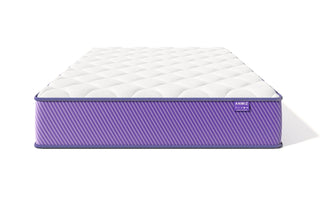Best Latex Mattress
We receive free products to review and participate in affiliate programs, where we are compensated for items purchased through links from our site. See our disclosure page for more information.
Compared to other mattresses, latex beds are typically more durable, breathable, bouncy, and cooling. At Mattress Clarity, we’ve dedicated countless hours to researching and testing latex mattresses to identify the best options available. We reviewed over 20 different latex mattresses, but only eight made the final list. In this article, we’ll go over each of these top picks and provide helpful tips on what sleepers should look for when shopping for a latex mattress.
Our Verdict
Our expert reviewers selected the Birch Natural for its versatile support and comfort. Featuring thick Talalay latex and individually wrapped coils, it provides excellent support and caters to a wide range of sleepers.
Best Latex Mattresses, Tested by Experts
- Birch Mattress – Best Overall
- Leesa Mattress – Best Latex hybrid Mattress
- Silk & Snow Mattress – Best Latex Mattress in a Box
- WinkBeds Mattress – Best Latex Mattress for Combination Sleepers
- Saatva Mattress – Best Luxury Latex Mattress
- Nolah Mattress – Best Latex Mattress for Back Sleepers
Compare the Best Latex Mattresses
How We Chose the Top Picks
Every bed we consider goes through a battery of tests, but when compiling a roundup of latex mattresses, a few features are weighed more heavily than others. Here’s a bit more on those factors, and why they matter more for a latex mattress:
Best Latex Mattresses: Our Testing Experience
Best Overall – Birch Mattress

Best Latex Hybrid Mattress – Leesa Mattress
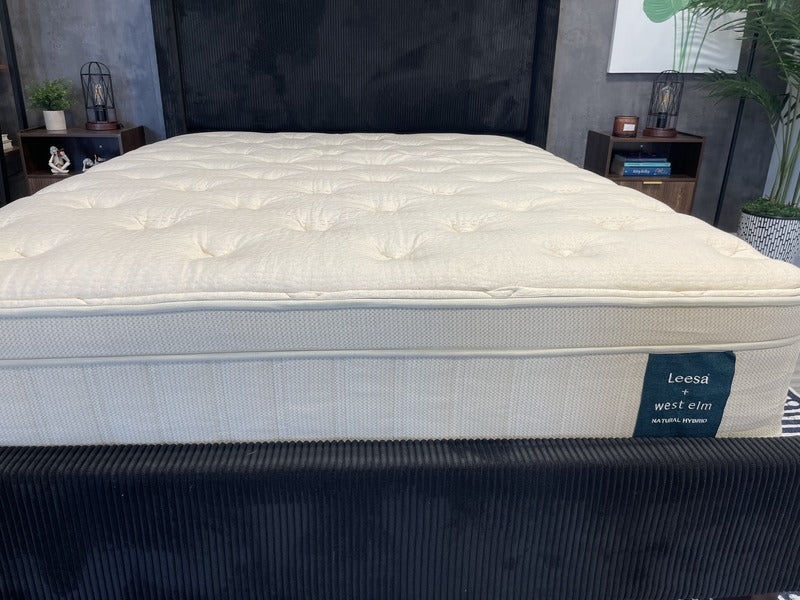
Best Latex Mattress in a Box – Silk & Snow Mattress

Silk & Snow Organic Mattress
Best Latex Mattress for Combination Sleepers – WinkBed Mattress

Best Luxury Latex Mattress – Saatva Mattress

Saatva Mattress
Best Latex Mattress for Back Sleepers – Nolah Natural
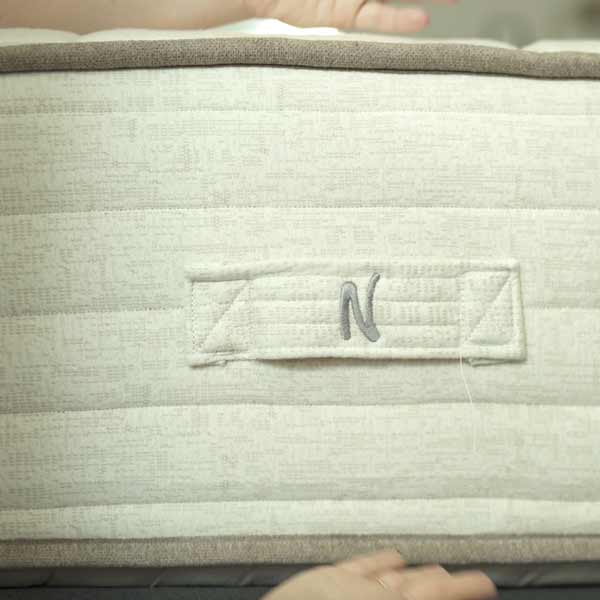
Other Latex Mattresses We Like
While these mattresses didn’t make our list of top 10, these mattresses are still a great option for people who are looking for a latex mattress. Check out our recommendations below.
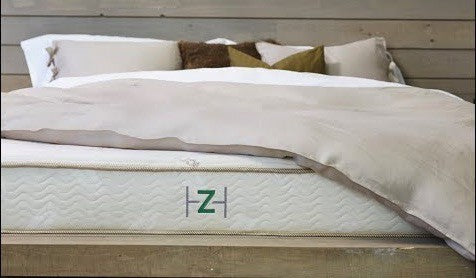
Our Testing Methodology

To put together this best mattress reviews list, our team of Certified Sleep Science Coaches spent time actually lying down on each mattress, performing hands-on testing, and evaluating the factors above to determine which would be the best fit for each ranking.
For example, we test the motion isolation of each mattress by placing a glass of water on it and pressing the layers around it. If the water moves a lot, we know that the mattress does not have great motion isolation. We also test the edge support to see how much the bed collapses and look at a pressure map of the mattress to understand where there is built up pressure while laying on it. Rather than simply saying “this mattress is great” or “this mattress is terrible,” we recognize that this is a fairly subjective process. As a result, we simply try to point people in the right direction by categorizing each mattress and saying what type of sleeper might like it. Our rigorous testing and reporting process has helped over 4,500 readers purchase the best mattress for their needs.
Are Latex Mattresses Good for Heavier Sleepers?

Marten, our Lead Reviewer, has contributed to all of our latex mattress reviews. Standing at 6’7″ and weighing around 230 lbs, here’s his take on these mattresses:
"From this list, there are a few I believe are ideal for heavier individuals for several reasons. Heavier back sleepers should consider the Avocado or Birch, as both are hybrid mattresses that allow the hips to sink into the comfort layer just enough. Beneath that, the coils provide great support, durability, and breathability (thanks to the organic cotton cover).
Heavier side sleepers should also pay attention to the Avocado, as it might offer the best pressure relief of all the mattresses here. However, depending on your weight, you might feel some mild pressure on your shoulders and hips.
For stomach sleepers, the Awara stands out, as it’s the firmest of these options. When I lie on my stomach, my hips don’t bow in, providing the support needed for this sleeping position."
Benefits of Latex Mattresses
Latex mattresses are becoming increasingly popular, with many new brands entering the market. There are several reasons why this type of mattress offers a wide range of benefits:
- Durability: Natural latex mattresses are typically more durable than memory foam or poly foam due to the denser foams used in their construction. They are less likely to sag compared to foam mattresses, making them a great long-term investment. If longevity is important to you, this could be a significant advantage.
- Bounce: While this is a matter of personal preference, latex mattresses are known for their excellent bounce, which can be particularly beneficial for activities like sex. The responsive surface makes it easier to change positions and move around in bed.
- Elasticity: Latex can compress in one area without affecting the surrounding zones, allowing it to support the body while relieving pressure on key points. This feature provides a cradling effect without sacrificing comfort.
- No "stuck" feeling: Memory foam mattresses often leave sleepers feeling “stuck” as they slowly sink in. Latex mattresses, however, offer a more responsive surface, so you won’t feel trapped, but you still get effective pressure relief.
- Hypoallergenic: Latex resists common allergens like mildew, mold, and dust mites. Its open-cell structure promotes airflow, keeping the sleeper dry and comfortable. Choosing natural latex ensures that it’s not treated with harsh chemicals, providing peace of mind for those sensitive to allergens.
- Natural: For a mattress to be truly considered "green," it must be made from natural latex foam. While some companies claim to offer eco-friendly mattresses, unless they use natural latex, they don't meet the mark. If you're seeking a mattress made from genuinely natural materials, latex is the ideal choice.
- Sustainability: Latex is harvested from rubber trees, which can yield sap for up to 30 years. These trees don’t require pesticides or herbicides, and their bark regenerates quickly after tapping. Once the trees are no longer productive, the land can be replanted, and natural latex eventually biodegrades.
- Good for hot sleepers: If you tend to overheat at night, a latex mattress might be an excellent choice. The material’s breathability helps dissipate heat, unlike memory foam, which is known to trap heat. With latex, you can enjoy a cooler sleep experience.
3 Drawbacks to Latex Mattresses
While our latex mattress reviews highlight many benefits, it’s important to note that latex may not be the right fit for everyone. Here are a few potential drawbacks to consider:
- Weight: Natural latex mattresses are dense and, as a result, very heavy. They can be challenging to move, and it often requires at least two people to transport them. While this isn’t an issue once the mattress is set up, it’s something to keep in mind if you ever plan to move it to a different home.
- Higher cost: Sourcing natural latex is difficult and expensive, which makes these mattresses more costly. While they offer long-lasting durability and value, the price point may be outside the budget for some people.
- Not for everyone’s comfort preference: The bouncy feel of latex isn’t to everyone’s liking. It’s essential to understand the type of comfort you prefer before committing to a purchase, as latex may not be the right fit for all sleepers.
Latex vs. Other Types of Beds
Latex vs. Memory Foam Mattresses
- Latex mattresses are generally more breathable due to the open-cell structure of the foam, making them less likely to trap heat compared to memory foam.
- In terms of durability, latex mattresses typically outlast most memory foam options because of the higher density of latex foams.
- Latex offers more bounce and provides a sleeping "on top of the mattress" feel, whereas memory foam creates a slow, sinking sensation similar to quicksand. This ultimately comes down to personal preference, as neither option is inherently better than the other.
- Memory foam excels at motion isolation, making it potentially the best choice for couples who want to minimize disturbances from movement.
- In terms of pressure relief, memory foam often performs better in most cases, though it may not always be the best for everyone.
- When it comes to eco-friendliness, latex is typically a greener option than memory foam in almost all cases.
Latex vs. Innerspring Mattresses
- Both mattress types are breathable and should stay cool throughout the night.
- Both offer a decent amount of bounce.
- Latex mattresses are generally considered a more "green" option, as even high-quality innerspring mattresses typically feature a poly foam pillow-top made from petrochemicals.
- A latex mattress is typically more durable than the average spring mattress due to the density of the foams used in its construction.
Latex Allergies
Many readers have wondered if latex mattresses could be a concern for individuals with a latex allergy, but this is a common misconception. Credible studies confirm that latex in bedding is not likely to cause a reaction. This is because the latex undergoes a washing process that removes the proteins responsible for triggering allergic reactions.
What to Look for in a Latex Mattress
When considering a latex mattress, shoppers will encounter a completely different set of terminology compared to other mattress types. Important factors to consider include whether to choose natural versus synthetic or blended latex, the differences between Dunlop and Talalay processing, specific warranty considerations unique to latex mattresses, and factors like density and ILD (Indentation Load Deflection).
Natural vs. Synthetic Latex
A mattress can contain all-natural latex, synthetic latex, or a blend of both. Natural latex, derived from rubber trees, and synthetic latex, produced through a chemical process, feel quite similar. However, natural latex mattresses are generally the preferred choice.
Natural latex support cores are breathable and help pull moisture away from the body, keeping sleepers cooler in the summer, warmer in the winter, and comfortable throughout the year. This type of latex is naturally antimicrobial, hypoallergenic, and resistant to dust mites.
Ultimately, the choice comes down to cost. While people tend to prefer the feel and eco-friendliness of natural latex, even the most affordable all-natural mattresses typically start around $2,000. If your budget allows, natural latex is a great option, but if not, synthetic or blended latex provides a similar sleeping experience at a lower price point.

Dunlop vs. Talalay
Dunlop and Talalay are two distinct methods of processing latex, both derived from rubber trees, but they result in different feels. Dunlop processing produces a firmer feel, while Talalay processing creates a softer, more cushioning feel.

Neither type of latex support core is inherently better than the other. Dunlop is denser, typically heavier, and more durable, while Talalay tends to appeal to those seeking a pillow-soft surface. Talalay also offers a broader range of ILD ratings.
That said, Talalay tends to produce a more consistent latex. Ultimately, I recommend focusing on the feel of the mattress rather than the processing method, as the differences between the two are subtle and may not be highly noticeable in everyday use.
Latex Mattress Warranty
When considering a latex mattress, it's important to carefully review the warranty, just as you would with any mattress. The main concern with latex mattresses is the standard for compression and body impressions. Over time, these are the most common issues that may arise, so it's essential to understand the warranty terms and how the mattress is expected to perform as it ages.
Latex Density and ILD
When it comes to latex mattresses, there are two key measures of the foam: density and ILD (Indentation Load Deflection).
Density is measured in pounds (lbs) and refers to the weight per square foot. Generally, the higher the density, the more durable the foam is, meaning it will typically last longer.
ILD measures firmness, with ratings typically ranging from 14 to 44. The higher the number, the firmer the mattress. ILD indicates how easily the material conforms to your body. If you prefer a bed that you can sink into, go for a lower rating. For example, a rating of 14 is very soft, while a rating of 44 is extremely firm. Most ILD ratings typically fall between 19 and 37.



